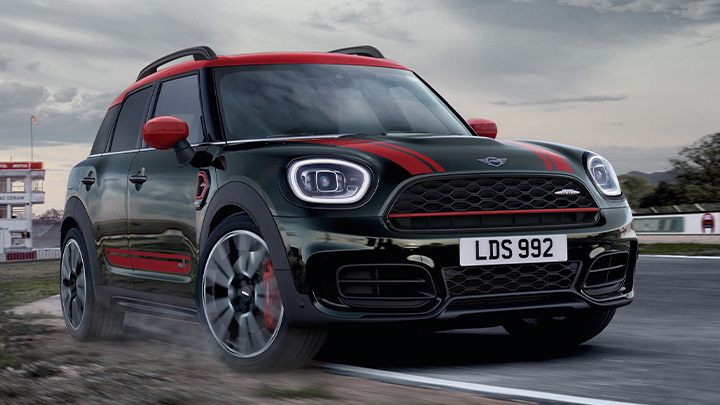


This edition of the Vauxhall-Opel VX220 2.0T is the 5 speed / Manual version and was first brought out in 2003. This was at around the same time as the introduction of the 2004 Westfield Sport 2000S and the 2004 Mitsubishi Lancer Evo VIII MR FQ 400.This particular Vauxhall-Opel VX220 has a 1998cc Naturally Aspirated Petrol powerplant with 4 cylinders in a St formation.
The VX220 shares its Petrol St4 engine configuration with the likes of the 2019 Ariel Atom 4 2.0 Turbo and the 2013 Caterham 7 620 R 2.0 L Supercharged. If you're looking for other fast cars which share the VX220's Rear Wheel Drive, Cabriolet combination then how about the 1982 Fiat X1/9 1.5 8V or the 1965 Aston-Martin DB6 1965.
Weighing in at 930 kgs (2050 lbs) this makes the Vauxhall-Opel VX220 2.0T in the same weight category as the 2020 Lotus Elise Sport 220 1.8 Supercharged or the give or take 50kg.
![Abarth 695 70th Anniversario 1.4 Turbo - [2020] image Abarth 695 70th Anniversario 1.4 Turbo - [2020] image](/editionimages/2071.jpg)
The Vauxhall-Opel VX220 shares the same bhp with the 2020 Abarth 695 70th Anniversario 1.4 Turbo (177 bhp)
In terms of power the 1998cc 16V St4 engine produces 197 bhp (146 kW) @ 5500 rpm similar to the 2020 Abarth 695 70th Anniversario 1.4 Turbo (177 bhp) or the 2020 Audi A1 Sportback 40 TFSI S tronic S line (197 bhp).
The Naturally Aspirated St4 throws out 184 lb-ft (249.4 Nm) @ 1950 rpm placing it with cars of similar torque performance figures such as the 2022 Mini Cooper Countryman John Cooper Works 1.5 Turbo (162 lb-ft) or the 2020 Abarth 695 70th Anniversario 1.4 Turbo (184 lb-ft).
If one combines the weight with power or torque performance for the Vauxhall-Opel VX220 you can get a better idea of it's real world performance.
![Vauxhall-Opel Monaro 6.0 V8 VXR - [2005] image Vauxhall-Opel Monaro 6.0 V8 VXR - [2005] image](/editionimages/578.jpg)
The 2005 Vauxhall-Opel Monaro 6.0 V8 VXR (236.7 bhp per ton) has similar Bhp Per Ton stats as the Vauxhall-Opel VX220.
The Vauxhall-Opel VX220 has a Power to weight ratio of 211.8 bhp per ton and 197.8 lb-ft per ton. Bhp Per Ton figures of the 2003 VX220 competing with the 2005 Vauxhall-Opel Monaro 6.0 V8 VXR (236.7 bhp per ton) or the 2000 Ford Mustang Cobra R 5.4 V8 (236.4 bhp per ton).
If you agree with the late great Carroll Shelby then arguably an even better indicator of potential performance, Torque. Use weight as well and you end up with - Torque per ton, with the Vauxhall-Opel VX220 generating around 197.8 lb-ft per ton. If you're curious as to what other cars have as much torque to weight then look no further than the 2021 Porsche Cayman GT4 RS 4.0 982 (222.8 lb-ft per ton) or the 2016 Audi A3 RS3 Saloon 2.5 Turbo (222.6 lb-ft per ton).
With a 0-60mph time of 4.70 secs or a 0-100km/h (0-62mph) of 4.9 secs, this made the Vauxhall-Opel VX220 2.0T as fast as the 2022 Mini Cooper Clubman John Cooper Works 2.0 Turbo ALL4 (4.70 secs) the 2020 BMW X4 M40d 3.0 Turbo (4.70 secs) the 2020 KIA Stinger GT 3.3 V6 Turbo AWD (4.70 secs) the or the 2020 KIA Stinger GT2 3.3 V6 Turbo (4.70 secs). This Vauxhall-Opel VX220 2.0T is also faster than the 2021 Porsche Taycan 4 Cross Turismo (4.80 secs) the 2020 Audi TT S Turbo 50 TFSI (4.80 secs) the 2018 Rolls-Royce Cullinan 6.7 V12 Turbo (4.80 secs) the and the 2017 Maserati GranCabrio Sport 4.7 V8 (4.80 secs).
When talking about the performance of the Vauxhall-Opel VX220 on the drag strip it can reach a quarter mile in an estimated 13.84 secs @ 98.8 mph. Similar performance down the quarter mile can be found with the the 1971 Maserati Bora 4.7 V8 (13.78 secs), the 2017 Audi A6 3.0T Competition (13.78 secs), and the 1973 Ferrari 308 GT/4 3.0L V8 (13.80 secs).
Modern performance cars are often artificially restricted to 155mph. The 2003 version of the Vauxhall-Opel VX220 2.0T has a maximum speed of 151mph.
If maxing out your car on the AutoBahn is your thing and you're wondering what's faster than the 2003 Vauxhall-Opel VX220 2.0T then how about the 2022 Lamborghini Huracan Sterrato (162 mph), the 2021 Porsche Taycan Turbo (162 mph), or the 2019 Ariel Atom 4 2.0 Turbo (162 mph).










Ford Taurus 3.0 V6 SHO
Engine: Naturally Aspirated Petrol | 2986cc 24v V6
Top Speed: 140 mph
0-60mph: 7.60 seconds

Land-Rover Velar 3.0 SDV6 300
Engine: Turbo Diesel | 2993cc 24v V6
Top Speed: 241.4 kph
0-100kph: 6.3 seconds



















